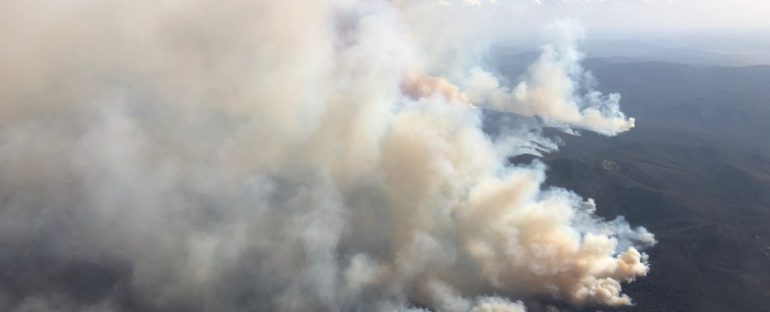The scorching destruction of Australia’s Black Summer bushfires between 2019 and 2020 provided an ominous glimpse of fire’s reach in our hotter, dryer world, and the impact of the unprecedented inferno is still being measured.
Just weeks ago, scientists observed that the amount of smoke spewed from the blaze into the atmosphere rivaled that of a great volcanic eruption. Now, researchers say the giant smoke cloud was so immense, it measurably heated the stratosphere for months on end.
In a new study led by first author and climate modeler Pengfei Yu from China’s Jinan University, scientists simulated the plume’s emergence and evolution, showing the worst documented wildfires in Australian history left a lasting impact on the region’s skies.
“Extreme wildfires can inject smoke into the upper troposphere and even into the stratosphere under favorable meteorological conditions,” the researchers write in their paper. “The higher the smoke is injected, the longer it will persist and the wider its extent.”
In the case of the Black Summer fires, the flames sent almost a trillion grams (approximately 0.9 teragrams) of smoke particles up into the stratosphere, which the researchers explain is the largest amount ever documented in the satellite era.
This smoke mass was made up of different kinds of smoke particles, including both organic carbon (OC, which includes brown carbon, aka BrC), and black carbon (BC).
Each of these have different heat-trapping effects in the atmosphere, with BC being the most heat-trapping, due to the way it warms surrounding air after absorbing sunlight.
According to the researchers’ calculations, the Black Summer plume was composed of about 2.5 percent black carbon, which helped provide a heating effect in the stratosphere that lasted the remainder of the year.
“Simulations suggest that the smoke remained in the stratosphere for all of 2020 and that it measurably warmed the stratosphere by about 1-2 K [Kelvin, equivalent here to 1-2 degrees Celsius] for more than six months,” the team explains.
“Our study highlights that record‐breaking wildfire smoke can cause persistent impacts to stratospheric dynamics and chemistry.”
In addition to warming the stratosphere, the researchers say the record-breaking smoke event would also have had a diminishing effect on ozone levels in the stratosphere, destroying ozone molecules in the mid-high latitudes of the Southern Hemisphere, and likely making the ozone hole bigger temporarily.
While the researchers acknowledge that observations of aerosols producing stratospheric warming have been made before, it’s the first time scientists have measured the phenomenon to such an extent as this, given the record-breaking output of the Black Summer fires.
The findings are reported in Geophysical Research Letters.
